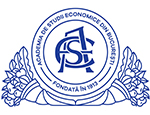
The “high priests” of innovation would have us believe that Artificial Intelligence is destined to become part of our “daily bread” – with all the biblical gravitas and pragmatic inevitability such a phrase implies – in the dawning age of Industry 4.0. Some eagerly pile anything onto their proverbial sandwich, embracing each new technological marvel with unblinking zeal as long as it promises returns; others recoil instinctively, unsettled by AI’s creeping presence. As always, the blessings and dangers of new technologies – AI currently reigning as their crown prince, with biotechnology, nanorobotics, blockchain cryptography, and quantum computing as some sort of a camarilla – are distributed unequally. From a class-clash perspective, it is the well-positioned elite who reap the gains, while the working majority are left navigating the risks. Between firms, those led by visionary and adaptive leaders will harness AI to their advantage, outpacing the more rigid or reluctant one. Within companies, AI serves as a prosthesis for underperforming or less skilled workers, narrowing productivity gaps. Yet whether it will eventually render the former obsolete – the so-called “useless class,” as Yuval Noah Harari provocatively puts it – or displace the competent but undervalued, in a grim echo of “Gresham’s Law”, this remains one open question. In the meantime, scholars toil – tirelessly parting, over-theorizing, and second-guessing a future possibly hidden in plain sight.








